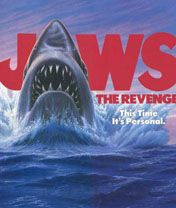The Wright Stuff: To sequel or not to sequel
Does the mobile games veteran want another one?

Gears of War 2, Halo 3, GTA IV, FIFA 2009 – the gaming world is full of sequels. Mobile is no different, and my old company is no better than the rest – some would say worse.
But the bitter truth is when you're a publisher, a sequel is one of your few safe bets. Take what you did last time/year, tweak some features and add one to the number in the title – it's the nearest thing we have to predicting the future: predicting future sales, that is.
The situation is even safer when it comes to sports games, as the audience positively embraces buying the new version which updates all the transfers that have occurred during the close season.
The problem with sequels, however, is what made the original game successful and fun is often lost in the process. You have to add more stuff to a sequel: marketing departments the world over believe more is better. Unfortunately, more is actually just more, not always better.
And this is especially an issue with mobile games.
For full-priced console games, aimed at the hardcore, adding more/bigger weapons and badder/bigger bad guys to the likes of Gears of Halo VI is great. But take a casual game like Tetris and try making a sequel when the thing that made Tetris so good is its simplicity and you'll only end up with Tetris Mania! Ouch.
Sadly then, there are many examples of mobile sequels that don't repeat the success of the original. Even in the case of sports games, publishers worry updating the player stats isn't enough and so feel duty bound to add a new, pointless feature that will give marketing an extra bulletpoint to talk about.
The answer is to take inspiration from the TV rather than movies.
Mobile games are more like snacks rather a full three-course meal so when it comes to sequels, they should be rolled out like TV shows, not blockbusters. Building a game around episodes rather than yearly feature film releases changes the way designers approach the game and provides a metaphor and structure the audience is familiar with.
Episodic games are not new, of course, but they are something that has almost never been done properly. Half-Life 2 and Sam & Max are about the only two examples that spring to mind and both are story-based games in which a strong set of characters and immersive plot have been split up and delivered in convenient bite-sized chunks.
So how do you make casual, mobile games episodic?
Find out in the all-new and improved The Wright Stuff II: The Revenge of the Sequel…
After 12 years in the games industry, the last eight as head of production at I-play, Chris Wright finally has escaped. He now runs his own consultancy focusing on casual games. He thinks his greatest achievement is being called a 'veteran of the mobile games industry', while his greatest regret is not completing Gears of War, even on the easiest setting. He can be contacted at chris[at]gamesconsultancy.com
All opinions expressed are the author's own.
